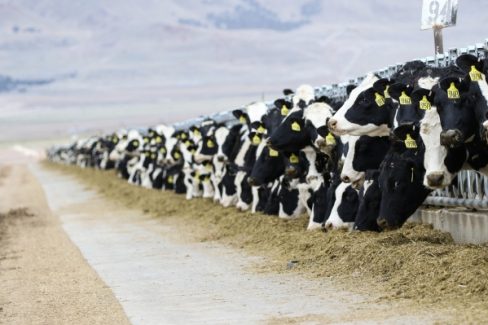If genomic testing were free, testing every heifer calf would be a no-brainer.
But it’s not. Whether you spend that money on genomic testing depends on how much genetic information you already have on your heifers, what you’ll do with the new information and how much the tests cost, says Albert De Vries, a University of Florida dairy specialist.
Dairy farmers have always realized that heifer calves, especially if they are sired by top bulls, represent their herds’ best genetics. But as farmers have perfected heifer rearing, some herds are pushing 40% cull rates to accommodate these new entrants.
Analysis of farm records shows that such high replacement rates are forcing older, higher producing cows out. And that’s costing farmers a ton of milk income.
“Older cows still produce more milk than first parity cows,” says De Vries. The keys to longer cow survival rates are identifying the truly superior heifers, growing them well and then keeping them healthy and productive for as long as possible. The corollary: Not every heifer calf born deserves a place in the milking string.
How Will You Use the Test?
De Vries has looked at various scenarios to estimate the value of genomic testing. They range from the use of conventional semen and selling a small portion of surplus heifers to more intense programs using sexed semen and selling a quarter of surplus heifers.
In most cases, having a lot of genetic information from parents yields slightly better returns than genomic testing animals. But in the absence of any genetic information or sire identification only, genomic testing can add $1,500 to $5,000 per year in net returns for a 100-cow herd. And that’s testing all heifers at an estimated cost of $50/head.
The other benefit to genomic testing is that it correctly identifies parentage. Nationally, about 15% of calves are misidentified. Genomic testing can reduce that error rate to perhaps 3% (because there will still be on-farm errors), which should in turn reduce the rate of inbreeding. For every 1% decline in inbreeding, lifetime performance will increase $25 or more, says De Vries.
Remember, too, the industry is already seeing the benefits of genomics through sire selection. Since 2008, there has been a strong upward shift in genetic trend on the sire side, in large part due to genomics. “There is more opportunity, money not being made, if you’re not paying attention to the latest bulls than there was in the past,” he says.
So another option is to simply use better bulls. De Vries estimates that simply using bulls with $50 higher Net Merit would be the equivalent of genomic testing heifers with no parent information. And if you have sire identification on heifer calves, increasing the Net Merit by $20 would be the equivalent of the benefit of genomic testing.
De Vries’ conclusions: “Genomic testing is here to stay, and can make you money, maybe. Its value will likely increase when we learn more how to best use the information.”
You can view an hour-long seminar on genomic testing of heifers HERE.
Source – Dairy Herd




